‘Wheel Of Giants’: Mysterious Complex Of Circles – Prehistoric ‘Stonehenge’ Monument In The Middle East
A. Sutherland - AncientPages.com - One of the most mysterious structures in the Middle East is the prehistoric stone monument that went unnoticed for centuries in the Golan Heights, probably because it is not visible on the ground but only from the air.
Known as Rujm el-Hiri in Arabic, meaning the "stone heap of the wild cat", the complex has five concentric circles, the largest more than 500 feet (152 m) wide, and a massive burial chamber in the middle. Its Hebrew name Gilgal Refaim, or "wheel of giants", refers to an ancient race of giants mentioned in the Bible.
There is strong evidence that the biblical giants or Refaim of the Bible were the architects the Circle of the Refaim.
Known as Rujm el-Hiri in Arabic, meaning the “stone heap of the wild cat”, the complex has five concentric circles, the largest more than 500 feet (152 m) wide, and a massive burial chamber in the middle. Its Hebrew name Gilgal Refaim, or “wheel of giants”, refers to an ancient race of giants mentioned in the Bible.
In Genesis 14:5, “the Refaim inhabit the place called Ashtherot-Karnaim. Just ten miles from the rings is the site of an ancient Canaanite city called Ashtherot”.
In Joshua 12:4, “King Og of Bashan, the last of the Refaim, who lived at Ashtarot… ruled a territory stretching From Mount Hermon in the north”.
See also:
Mystery Of The Pre-Adamic Didanum Race: Giants Who Were Ancestors Of The Nephilim and Rephaim
In 1 Chronicles 6:71, we are told that the half-tribe of Manasseh later inhabited “Golan,” in Bashan. The most explicit description of the size of the people of Bashan is found in Deuteronomy 3. “King Og‘s iron bedstead is kept at Rabbah… and measures thirteen and a half feet long and six feet wide.” The Refaim “were a large and powerful tribe, as tall as the Anakim (giants).
In Chronicles 20, the last of the Anakim is killed.
And yet again there was war at Gath, where was a man of great stature, whose fingers and toes were four and twenty, six on each hand, and six on each foot: and he also was the son of the giant. But when he defied Israel, Jonathan the son of Shimea David’s brother slew him. These were born unto the giant in Gath; and they fell by the hand of David, and by the hand of his servants”. (1Ch 20:6-8) Notice here also, that he was the son of a giant, an Elouid.
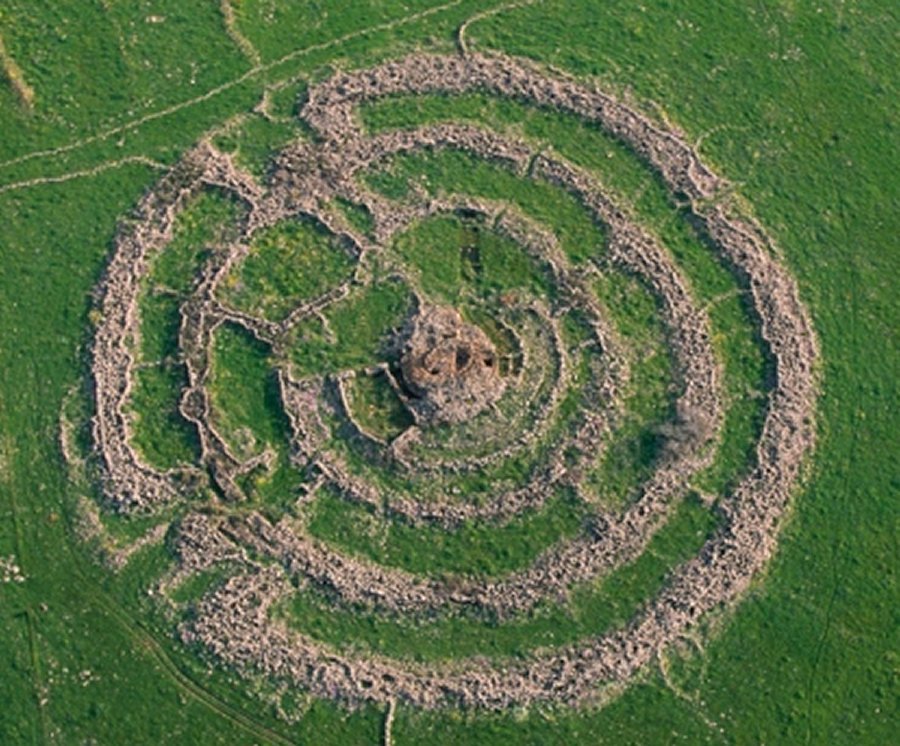 An aerial photo shows ‘Rujm al-Hiri’, an ancient structure of stone circles, found in the Golan Heights. It is located about 16 kilometres east of the eastern coast of the Sea of Galilee. (Flickr/Itamar Grinberg/israeltourism)
An aerial photo shows ‘Rujm al-Hiri’, an ancient structure of stone circles, found in the Golan Heights. It is located about 16 kilometres east of the eastern coast of the Sea of Galilee. (Flickr/Itamar Grinberg/israeltourism)
This pattern of stone circles was spotted by archaeologists studying an aerial survey of the Golan Heights after 1967 war. Golan Heights, of which name is known from the biblical city of refuge Golan in Bashan (Deuteronomy 4:43; Joshua 20:8), is a hilly area overlooking the upper Jordan River valley on the west.
It is up to 5,000 years old, according to most estimates, making it a contemporary of England's Stonehenge. Unlike the more famous monument built with about 100 huge stones topped by lintels, the Golan structure is made of piles of thousands of smaller basalt rocks that together weigh over 40,000 tons.
What function really fulfilled this place, we do not know. All proposed solutions are only more or less likely theories.
There could be an astrological or other ceremonial centers. On the shortest and longest days of the year - the June and December solstices - the sunrise lines up with openings in the rocks. Among other proposed functions are: astronomical observatory, calendar-like construction.
Standing on the ground inside the complex, it looks like a labyrinth of crumbling stone walls overgrown with weeds. From on top of the five-meter-high burial mound, it is possible to make out a circular pattern. Only from the air does the impressive shape of a massive bull's-eye clearly emerge.
Scholars agree that construction started as early as 3,500 BC and other parts may have been added to over the next two thousand years.
In 1968 Professor Yonathan Mizrahi of the Department of Anthropology at Harvard University and Prof. Anthony Aveni of Colgate University discovered that in 3000 BC, the first rays of the summer solstice would have appeared directly through the northeast opening as observed from the central tumulus, while the southeast opening provided a direct view of Sirius.
One function of the circles then, was an astronomical observatory and stellar calendar. Or was it? The question is "why would the builders have undertaken such a massive building project, collecting 37,000 tons of stone and painstakingly laying them down to last forever, when the same task could have been completed using one rock and a stick?"
Written by – A. Sutherland - AncientPages.com Senior Staff Writer
Copyright © AncientPages.com All rights reserved. This material may not be published, broadcast, rewritten or redistributed in whole or part without the express written permission of AncientPages.com
Expand for referencesMore From Ancient Pages
-
 Undeciphered Ancient Code Could Be Evidence Of The World’s Oldest Data Storage System
Archaeology | Feb 27, 2014
Undeciphered Ancient Code Could Be Evidence Of The World’s Oldest Data Storage System
Archaeology | Feb 27, 2014 -
 What Were Victorian Bathing Machines?
Ancient History Facts | Jun 9, 2018
What Were Victorian Bathing Machines?
Ancient History Facts | Jun 9, 2018 -
 Garden Of Eden And Its Four Rivers – Possible Locations Of Biblical Paradise Suggested By Archaeologists, Historians And Biblical Scholars
Biblical Mysteries | May 29, 2017
Garden Of Eden And Its Four Rivers – Possible Locations Of Biblical Paradise Suggested By Archaeologists, Historians And Biblical Scholars
Biblical Mysteries | May 29, 2017 -
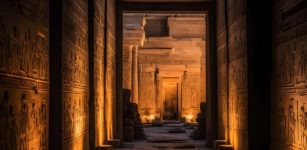 The Mystery Of Ancient Ever-Burning Lamps
Ancient Technology | Sep 10, 2024
The Mystery Of Ancient Ever-Burning Lamps
Ancient Technology | Sep 10, 2024 -
 Neanderthal And Denisovan Blood Groups Deciphered And The Results Are Surprising
Archaeology | Aug 2, 2021
Neanderthal And Denisovan Blood Groups Deciphered And The Results Are Surprising
Archaeology | Aug 2, 2021 -
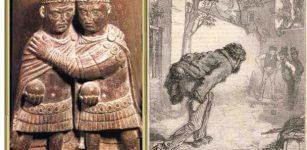 Ancient Egyptians Played Bowling 5,000 Years Ago
Ancient History Facts | Feb 22, 2016
Ancient Egyptians Played Bowling 5,000 Years Ago
Ancient History Facts | Feb 22, 2016 -
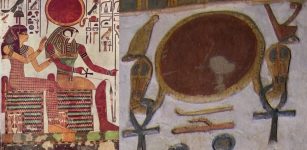 Eye Of Ra – Powerful Ancient Egyptian Symbol With Deep Meaning
Ancient Symbols | Jan 23, 2019
Eye Of Ra – Powerful Ancient Egyptian Symbol With Deep Meaning
Ancient Symbols | Jan 23, 2019 -
 On This Day In History: Vädersol Painting Depicting ‘Sun Dog’ Phenomenon Observed Over Stockholm – On Apr 20, 1535
News | Apr 20, 2016
On This Day In History: Vädersol Painting Depicting ‘Sun Dog’ Phenomenon Observed Over Stockholm – On Apr 20, 1535
News | Apr 20, 2016 -
 Violent Steppe Invasion In Iberia Peninsula Theory Challenged By Archaeologists
Archaeology | Sep 10, 2024
Violent Steppe Invasion In Iberia Peninsula Theory Challenged By Archaeologists
Archaeology | Sep 10, 2024 -
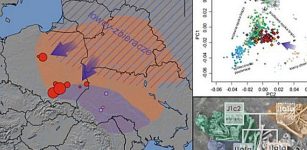 Great Migrations Took Place In Poland And Ukraine In Bronze Age
Archaeology | Sep 8, 2023
Great Migrations Took Place In Poland And Ukraine In Bronze Age
Archaeology | Sep 8, 2023 -
 Peru’s Wari Culture And Their Ancient ‘Amunas’ Will Help Peru’s Water
Ancient Technology | Apr 13, 2015
Peru’s Wari Culture And Their Ancient ‘Amunas’ Will Help Peru’s Water
Ancient Technology | Apr 13, 2015 -
 2,000-Year-Old Completely Preserved Shipwreck With Amphorae Found Near Šćedro Island
Archaeology | May 14, 2024
2,000-Year-Old Completely Preserved Shipwreck With Amphorae Found Near Šćedro Island
Archaeology | May 14, 2024 -
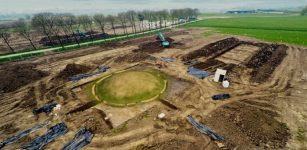 4,000-Year-Old Stonehenge Of The Netherlands Reveals Its Secrets
Archaeology | Jun 22, 2023
4,000-Year-Old Stonehenge Of The Netherlands Reveals Its Secrets
Archaeology | Jun 22, 2023 -
 Ephemeral Evidence Of Mediterranean Mobility – Boats, Migration, And The Central Mediterranean Passage In Focus
Archaeology | Dec 23, 2021
Ephemeral Evidence Of Mediterranean Mobility – Boats, Migration, And The Central Mediterranean Passage In Focus
Archaeology | Dec 23, 2021 -
 Biblical City Of Gezer: Important Ancient City Mentioned In The Amarna Letters
Biblical Mysteries | Sep 6, 2018
Biblical City Of Gezer: Important Ancient City Mentioned In The Amarna Letters
Biblical Mysteries | Sep 6, 2018 -
 Sacred Healing Earth Of Chimayo And The Mysterious Black Christ Crucifix
Featured Stories | May 24, 2019
Sacred Healing Earth Of Chimayo And The Mysterious Black Christ Crucifix
Featured Stories | May 24, 2019 -
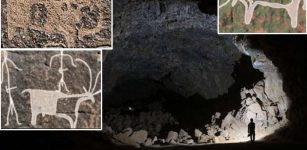 Human Occupation In Lava Tube Cave In Saudi Arabia – First Evidence Discovered
Archaeology | Apr 18, 2024
Human Occupation In Lava Tube Cave In Saudi Arabia – First Evidence Discovered
Archaeology | Apr 18, 2024 -
 Early Bantu Speakers Crossed Through The Dense Central African Rainforest 4,000 Years Ago
Archaeology | Aug 2, 2022
Early Bantu Speakers Crossed Through The Dense Central African Rainforest 4,000 Years Ago
Archaeology | Aug 2, 2022 -
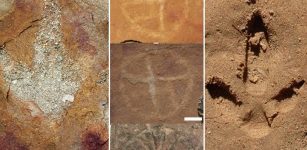 Intriguing Collection Of Petroglyphs And Dinosaur Footprints Found At The Serrote do Letreiro Site, Brazil
Archaeology | Mar 20, 2024
Intriguing Collection Of Petroglyphs And Dinosaur Footprints Found At The Serrote do Letreiro Site, Brazil
Archaeology | Mar 20, 2024 -
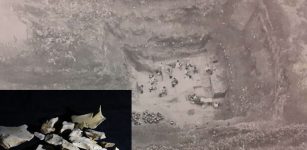 Evidence Humans Used Fire 1 Million Years Ago In Israel Discovered By Artificial Intelligence
Archaeology | Jun 15, 2022
Evidence Humans Used Fire 1 Million Years Ago In Israel Discovered By Artificial Intelligence
Archaeology | Jun 15, 2022


